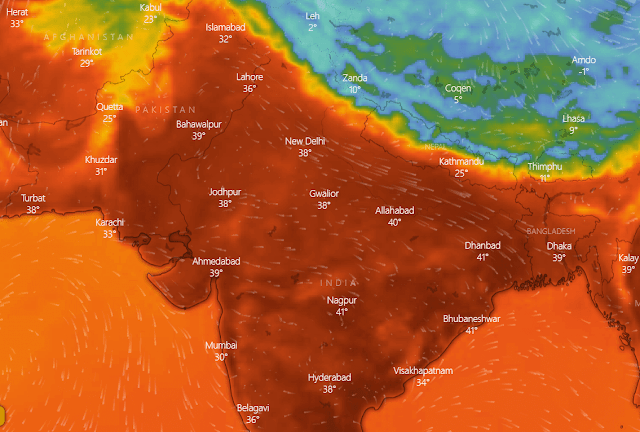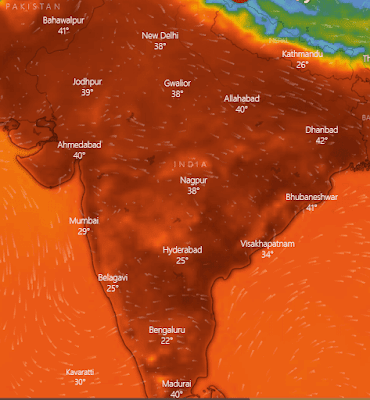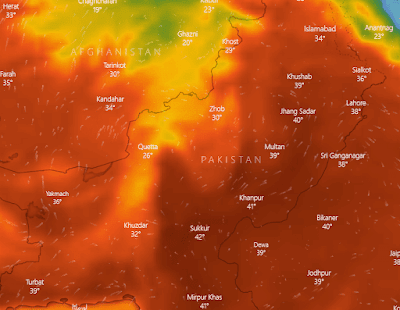Heatwave in South Asia makes billions of people suffer as temperature rocks at 43℃.
According to Windy, the temperature in the Indian city of Kharagpur, which is close to one of the major cities in India, reached 43°C. In Bangladesh, the city of Meherpur, which borders India, has a temperature of 42°C.
In Pakistan, the temperatures in Sukkur and Shahdadpur are both 42°C.
According to recent studies, South Asia is presently undergoing a three-week-long lethal heatwave that is harming nearly one in every eight people on the planet. The heatwave has been especially harsh for individuals who must work outside on a regular basis, such as street sellers, construction workers, and farmers. India, Pakistan, and Bangladesh have been particularly hard hit, with temperatures hitting all-time highs and rainfall levels much below average. The heatwave has been disastrous for public health and agriculture, with fatalities reported in both India and Pakistan.
The heatwave's impacts were felt in both nations. Several Indian states, including Maharashtra, Telangana, Andhra Pradesh, and Uttar Pradesh, were impacted. The heatwave triggered power disruptions in several locations, leaving millions without power for days. The absence of power also had an impact on water delivery, making it difficult for people to remain hydrated. Agriculture was also heavily damaged, with crops like wheat and rice suffering from heat stress and withering.
In 2023, Pakistan too witnessed a severe heatwave, with temperatures reaching 45 degrees Celsius in certain regions. The heatwave produced power disruptions, leaving residents without air conditioning and making escape from the intense heat difficult. Karachi was especially hard hit, with many citizens unable to deal with the heat. The heatwave also wreaked havoc on agriculture, with crops like cotton and sugarcane suffering from heat stress.
Scientists from many nations worked together to establish how human-caused climate change affected the heatwave, and they discovered that it made it both hotter and more likely to occur. Climate change will worsen severe heat occurrences in the future, with disastrous effects for human life and the ecosystem. Furthermore, the heatwave's dry character has rendered humidity less relevant for health implications than in prior heatwaves.
Surviving in South Asia increasingly relies on artificial cooling, which requires energy, yet the use of fans and air conditioners fueled by fossil fuels progressively warms the earth. As a result, it is critical to promote environmentally friendly and sustainable cooling systems. The prolonged heatwave has already raised demand for coal imports, causing air pollution increases and hurting wheat output, perhaps raising global food costs. All of this emphasizes the critical importance of addressing climate change and its destructive effects on disadvantaged people.



